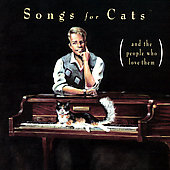Traditionally, attorneys’ fees were notoriously difficult for a prevailing party to recover in a trademark action. The United States Supreme Court’s 2014 opinion in a patent case, Octane Fitness, LLC v. ICON Health & Fitness, Inc.,[1] relaxed the applicable standard in construing the Patent Act’s identical fee-shifting provision and will likely result in a lower bar to the recovery of fees in trademark disputes. On October 24, 2016, the Ninth Circuit joined the Third, Fourth, Fifth and Sixth Circuits in extending Octane’s holding to a trademark fee application.[2]
Section 35 of the Lanham Act permits courts to award attorneys’ fees to a prevailing party in “exceptional cases,” at the discretion of the district court judge.[3] The legislative history, though sparse, reflects that Congress intended to afford the remedy in two situations: “First, the legislature envisioned ‘make whole’ compensation for certain victims of infringement; second, Congress endeavored to afford protection to defendants ‘against unfounded suits brought by trademark owners for harassment and the like.’”[4]
The Pre-Octane Hodgepodge
Before the Supreme Court’s decision in Octane, appellate courts did not interpret the “exceptional case” standard consistently, leading the Ninth Circuit to characterize “the line delineating ‘exceptional’ cases under the Lanham Act” as “murky” and “far from clear.”[5] In the Eighth and Ninth Circuits, for example, a prevailing party could recover fees in cases deemed “groundless, unreasonable, vexatious, or pursued in bad faith.”[6] The D.C. Circuit, in an opinion authored by then-Judge Ginsburg and joined by then-Judge Scalia, held that “‘exceptional,’ as Congress used the word in section 35 of the Lanham Act, is most reasonably read to mean what the word is generally understood to indicate—uncommon, not run-of-the-mill.”[7] In the Tenth Circuit, a prevailing plaintiff could recover fees by showing that the defendant acted in bad faith, while a prevailing defendant had to show that (1) the plaintiff’s case lacked foundation; (2) the plaintiff brought suit in bad faith; (3) the plaintiff prosecuted the case in an “unusually vexatious and oppressive manner”; or (4) “perhaps for other reasons as well.”[8] This fourth category led the Seventh Circuit to grumble that the Tenth Circuit “can hardly be said to have a test” at all.[9] The Seventh Circuit blamed “circuit drift” for what it complained was “this jumble.”[10] It concluded that a case under the Lanham Act is “exceptional” if the losing party was the plaintiff and was guilty of abuse of process in suing, or if the losing party was the defendant and had no defense yet persisted in the trademark infringement or false advertising for which it was being sued, in order to impose costs on its opponent.[11]
Compounding these inconsistencies, some appellate courts applied a different standard to prevailing plaintiffs than to prevailing defendants. In Fogerty v. Fantasy, Inc., the United States Supreme Court held that the Copyright Act’s attorneys’ fees provision must be applied evenhandedly to both prevailing plaintiffs and prevailing defendants.[12] Following that decision, some appellate courts held that the same evenhanded rule must apply in construing §35 of the Lanham Act.[13] The Tenth Circuit, by contrast, expressed skepticism that “there should be, or even could be, perfect harmony between the standard for awarding attorney fees to a prevailing plaintiff and a prevailing defendant. The underlying conduct under scrutiny is different.”[14]
Federal Circuit Smackdown: Supreme Court Edition
Against the backdrop of this hodgepodge, the Supreme Court took up Octane, a patent case in which the Court interpreted §285 of the Patent Act. Like its Lanham Act counterpart, §285 authorizes an award of fees to the prevailing party in “exceptional” cases. Octane involved a dispute between competing manufacturers of fitness equipment.[15] ICON, the plaintiff-respondent, sued Octane, the defendant-petitioner, alleging that certain of Octane’s elliptical machines infringed several claims of a patent owned by ICON. The district court granted summary judgment in favor of Octane, finding multiple claim elements lacking as a matter of law, both literally and under the doctrine of equivalents.[16] The court denied Octane’s motion for attorneys’ fees, relying on Federal Circuit authority, which held that “[a]bsent misconduct in conduct of the litigation or in securing the patent, sanctions maybe imposed against the patentee only if both (1) the litigation is brought in subjective bad faith, and (2) the litigation is objectively baseless.”[17] The Federal Circuit affirmed the denial of fees, and the Supreme Court reversed in a nearly unanimous[18] opinion authored by Justice Sotomayor.
The Supreme Court found the Federal Circuit approach overly “rigid and mechanical.”[19] The Federal Circuit defined subjective bad faith and objective baselessness narrowly, holding that “litigation is objectively baseless only if it is ‘so unreasonable that no reasonable litigant could believe it would succeed,’ and that litigation is brought in subjective bad faith only if the plaintiff ‘actually know[s]’ that it is objectively baseless.”[20] The Supreme Court found this “formulation … overly rigid” because it “superimposes an inflexible framework onto statutory text that is inherently flexible.”[21] Requiring both objective baselessness and subjective bad faith on the part of the plaintiff was too restrictive, because conduct satisfying either one of these elements standing alone may be enough to merit fees.[22]
Thus, the Supreme Court held that the Federal Circuit’s test was contrary to the express language of §85, which (like its textually identical counterpart in the Lanham Act) provides: “The court in exceptional cases may award reasonable attorney fees to the prevailing party.”[23] Because the Patent Act does not define what constitutes an “exceptional” case, the Court construed it “in accordance with its ordinary meaning.”[24] “In 1952, when Congress used the word in § 285 (and today, for that matter), ‘[e]xceptional’ meant ‘uncommon,’ ‘rare,’ or ‘not ordinary.’”[25] Accordingly, the Court held that “an ‘exceptional’ case is simply one that stands out from others with respect to the substantive strength of a party’s litigating position (considering both the governing law and the facts of the case) or the unreasonable manner in which the case was litigated.”[26] In reaching its holding, the Court relied, in part, on the D.C. Circuit Court opinion in which then-Judge Ginsburg, joined by then-Judge Scalia, rejected a claim that fee-shifting awards must be supported by subjective bad faith, holding instead that the “exceptional case” standard should be construed according to its ordinary meaning—“uncommon, not run-of-the-mill.”[27]
Octane Takes Off: Application to Trademark Cases
The Third Circuit was the first to apply Octane in a trademark action, followed by several others, including, most recently, the Ninth Circuit on October 24, 2016. This progression is consistent with the migration of other Supreme Court rules from one intellectual property field into another; for example, the application of the patent doctrine of willful blindness in copyright cases,[28] and the extension of eBay’s[29] rule regarding irreparable harm in patent permanent injunction applications to preliminary injunctions in both trademark and copyright cases.[30]
Although trademark litigants should not expect awards of attorneys’ fees to become “an ordinary thing,”[31] the Supreme Court’s relaxation of the standard for fee awards in patent cases should result in a corresponding lowering of the bar in trademark cases.
[1] 134 S. Ct. 1749 (2014).
[2] SunEarth, Inc. v. Sun Earth Solar Power Co., Ltd., Ninth Circuit Case Nos. 13-17622, 15-16906, slip op. (Oct. 24, 2016).
[3] 15 U.S.C. § 117(a).
[4] Noxell Corp. v. Firehouse No. 1 Bar-B-Que Rest., 771 F.2d 521, 524 (D.C. Cir. 1985) (citing S. REP. NO. 93-1400 at 5, 6 (1974), reprinted in 1974 U.S.C.C.A.N. 7132, 7136).
[5] Secalt S.A. v. Wuxi Shenxi Constr. Mach. Co., Ltd., 668 F.3d 677, 681, 687 (9th Cir. 2012).
[6] See, e.g., Mattel Inc. v. Walking Mountain Prods., 353 F.3d 792, 816 (9th Cir. 2003) (vacating denial of attorneys’ fees to defendant and remanding where plaintiff’s case may have been either groundless or unreasonable); Cairns v. Franklin Mint Co., 292 F.3d 1139, 1156 (9th Cir. 2002) (affirming award of $2,308,000 in attorneys’ fees to defendant where plaintiff asserted groundless false advertising claim); Hartman v. Hallmark Cards, Inc., 833 F.2d 117, 123 (8th Cir. 1987) (affirming denial of fees where plaintiff’s claims were weak but “not baseless”).
[7] Noxell, 771 F.2d at 526.
[8] Nat’l Ass’n of Prof’l Baseball Leagues, Inc. v. Very Minor Leagues, Inc., 223 F.3d 1143, 1147–48 (10th Cir. 2000).
[9] Nightingale Home Healthcare, Inc. v. Anodyne Therapy, LLC, 626 F.3d 958, 960 (7th Cir. 2010).
[10] Id. at 961–62. 10.
[11] Id. at 963-964.
[12] 510 U.S. 517, 534 (1994).
[13] See, e.g., Stephen W. Boney, Inc. v. Boney Servs., Inc., 127 F.3d 821, 826 (9th Cir. 1997).
[14] Nat’l Ass’n of Prof’l Baseball Leagues, Inc. v. Very Minor Leagues, Inc., 223 F.3d 1143, 1148 (10th Cir. 2000).
[15] Octane, 134 S. Ct. at 1754.
[16] ICON Health & Fitness, Inc. v. Octane Fitness, LLC, No. 09-319 ADM/SER, 2011 WL 2457914 (D. Minn. June 17, 2011).
[17] Id. (quoting Brooks Furniture Mfgr., Inc. v. Dutailier Int’l, Inc., 393 F.3d 1378 (Fed. Cir. 2005).
[18] Justice Scalia joined in the opinion except as to footnotes 1–3, which discuss the legislative history of § 285. 26.
[19] Octane, 134 S.Ct. at 1754.
[20] Id. (quoting Brooks Furniture Mfg., Inc. v. Dutailier Int’l, Inc., 393 F.3d 1378, 1382 (Fed. Cir. 2005))
[21] Id. at 1756.
[22] Id. at 1757.
[23] 35 U.S.C. § 285.
[24] Octane, 134 S. Ct. at 1756 (internal quotations marks omitted).
[25] Id. (alteration in original).
[26] Id.
[27] Noxell, 771 F.2d at 526.
[28] Viacom Int’l, Inc. v. YouTube, Inc., 676 F.3d 19 (2d Cir. 2012) (applying willful blindness rule from Global-Tech Appliances, Inc. v. SEB S.A., 131 S. Ct. 2060 (2011), to copyright claim in context of Digital Millennium Copyright Act).
[29] eBay Inc. v. MercExchange, L.L.C., 547 U.S. 388 (2006).
[30] See, e.g., Herb Reed Enters., LLC v. Fla. Entm’t Mgmt., Inc., 736 F.3d 1239 (9th Cir. 2013) (following eBay, no presumption of irreparable harm on preliminary injunction motion in trademark case); Salinger v. Colting, 607 F.3d 68 (2d Cir. 2010) (following eBay, finding of likelihood of success on the merits in copyright infringement case does not give rise to presumption of irreparable harm on preliminary injunction motion).
[31] Octane, 134 S. Ct. at 1753 n.1 (quoting S. REP. NO. 79-1503, at 2 (1946)).

